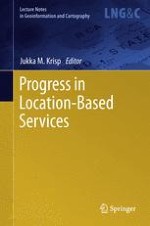2013 | OriginalPaper | Buchkapitel
Zooming In–Zooming Out Hierarchies in Place Descriptions
verfasst von : Daniela Richter, Maria Vasardani, Lesley Stirlng, Kai-Florian Richter, Stephan Winter
Erschienen in: Progress in Location-Based Services
Verlag: Springer Berlin Heidelberg
Aktivieren Sie unsere intelligente Suche, um passende Fachinhalte oder Patente zu finden.
Wählen Sie Textabschnitte aus um mit Künstlicher Intelligenz passenden Patente zu finden. powered by
Markieren Sie Textabschnitte, um KI-gestützt weitere passende Inhalte zu finden. powered by
